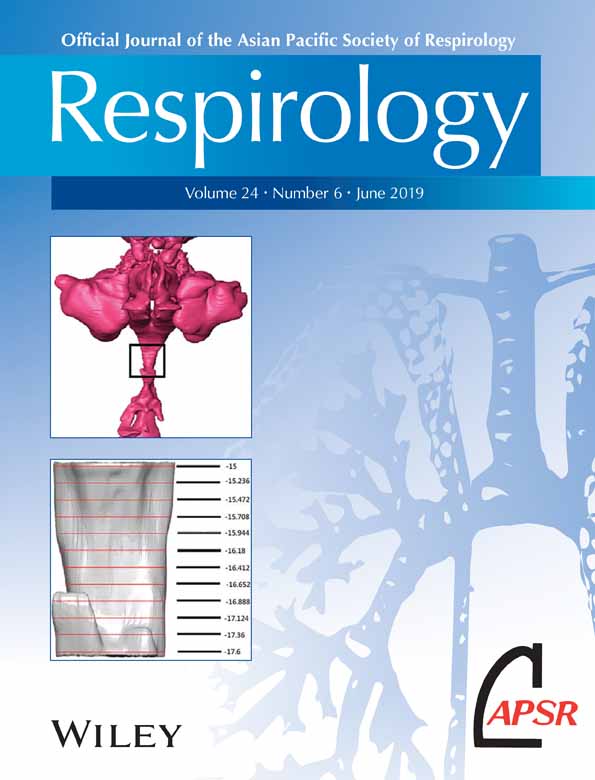Azithromycin and ABBA in the chest clinic: ‘The winner takes it all...’
Abstract
See related Article
Chronic cough is a common and frequently frustrating problem for patients and respiratory clinicians. When it produces sputum, we tend to sit up and take notice, recognizing that there may be an underlying significant disease causing the symptoms. However, there are cases where no underlying disease can be identified, yet the symptoms persist. These patients often carry a label of asthma and receive inhaled corticosteroid (ICS) treatment. They can receive frequent short courses of antibiotics, sometimes improving, only for the symptoms to recur. This is a difficult clinical problem. The patients do not quite fit our current disease paradigms, and we are never that comfortable with the therapies we have to offer, be they corticosteroids or frequent courses of antibiotics.
In a carefully observed case series in Respirology, Martin et al.1 describe the clinicopathological features of patients with idiopathic chronic productive cough and report a favourable response to low-dose, long-term azithromycin, as well as some indicators of response. In doing so, they place this syndrome within the larger context of the macrolide-responsive neutrophilic bronchitis that we recognize in bronchiectasis,2 chronic obstructive pulmonary disease (COPD),3, 4 bronchiolitis5 and some forms of asthma.6
The syndrome they identify is a troublesome productive cough, present for at least 8 or more weeks, and with other causes such as serious disease, infection, bronchiectasis, immunodeficiency and current irritant exposure excluded. The amount of sputum was modest in comparison with bronchiectasis and could be mucoid or purulent. Most, but not all, were non-smokers, had a diagnosis of asthma and were using ICS. Investigations demonstrated a range of bronchial wall abnormalities, from lymphocytic inflammation to bronchial wall thickening or dilation, on high-resolution computerized tomography (HRCT) of the thorax. These changes objectively confirm the presence of bronchitis as part of the pathology. Importantly, the patients were also experiencing significant health status impairment. Low-dose azithromycin led to significant improvement in a number of areas: improved quality of life, reduced sputum volume, reduced sputum neutrophils and reduced sputum interleukin (IL)-1beta.
Could this just be chronic bronchitis? Technically yes, but the complete resolution with azithromycin is not a recognized part of that syndrome. Could it be neutrophilic asthma? That is also possible, and without further studies of airway responsiveness, we cannot tell. However, the patients are not presenting as typical asthma patients with wheezing, lung attacks and beta-2-agonist responsiveness. So, it is probably not that useful to put them in these boxes.
What is important, however, is that the treatment results are consistent with other studies that show a good effect of low-dose azithromycin in neutrophilic bronchitis, whether that is part of bronchiectasis, COPD,5 neutrophilic asthma6 or protracted bacterial bronchitis (PBB),7 and the mechanistic observations are also consistent with other work in this area, showing IL-1beta as an important cytokine in neutrophilic bronchitis syndromes.5, 7, 8 The host airway inflammatory response in these syndromes is consistent with the body's response to infection, and the response to an antibiotic supports this. However, conventional microbiological studies could only identify a recognized pathogen in a subset (30%) of patients. Future airway microbiome studies may be more informative. For example, microbiome studies in asthma show the presence of Haemophilus influenzae and its reduction with azithromycin. Together, these data suggest a bacterial cause for the bronchitis. Further specificity is provided by the negative studies of macrolides in chronic dry cough,9 suggesting that the effect of azithromycin in this syndrome is not an effect on cough or cough hypersensitivity per se but on other processes causing the bronchitis.
The syndrome is reminiscent of PBB,10 the most frequent cause of chronic wet (productive) cough in children. As it is occurring in adults and represents an acquired lesion, we may call this Acquired Bacterial Bronchitis in Adults, or the ABBA syndrome. We do need a label to facilitate further studies, including studies of prevalence, mechanisms, long-term outcomes and confirmation of treatment responsiveness to macrolides. Future work may go on to define ideational dyspraxia as a feature.
The value of this work is that it shines a light on a difficult problem and provides justification to continue this line of inquiry. This is an example of careful clinical observation and the application of modern investigational methods to help understand what is going on. I do not know how common the ABBA syndrome is, so it would be helpful to use the case definition to conduct prevalence studies. Similarly, the treatment effect was identified in an open study, so there is an opportunity for a controlled trial to confirm the treatment effect. Does the ABBA syndrome, treated or untreated, lead to bronchiectasis? That remains a distinct possibility and is reported to occur as a consequence of PBB in children.10 This possibility could be addressed by a longitudinal observational cohort study. For the time being, azithromycin remains an option as an off-label treatment for idiopathic chronic productive cough after other causes of cough have been investigated and significant other conditions, including mycobacterial infections, have been excluded. It is unlikely to be useful for chronic dry cough.




